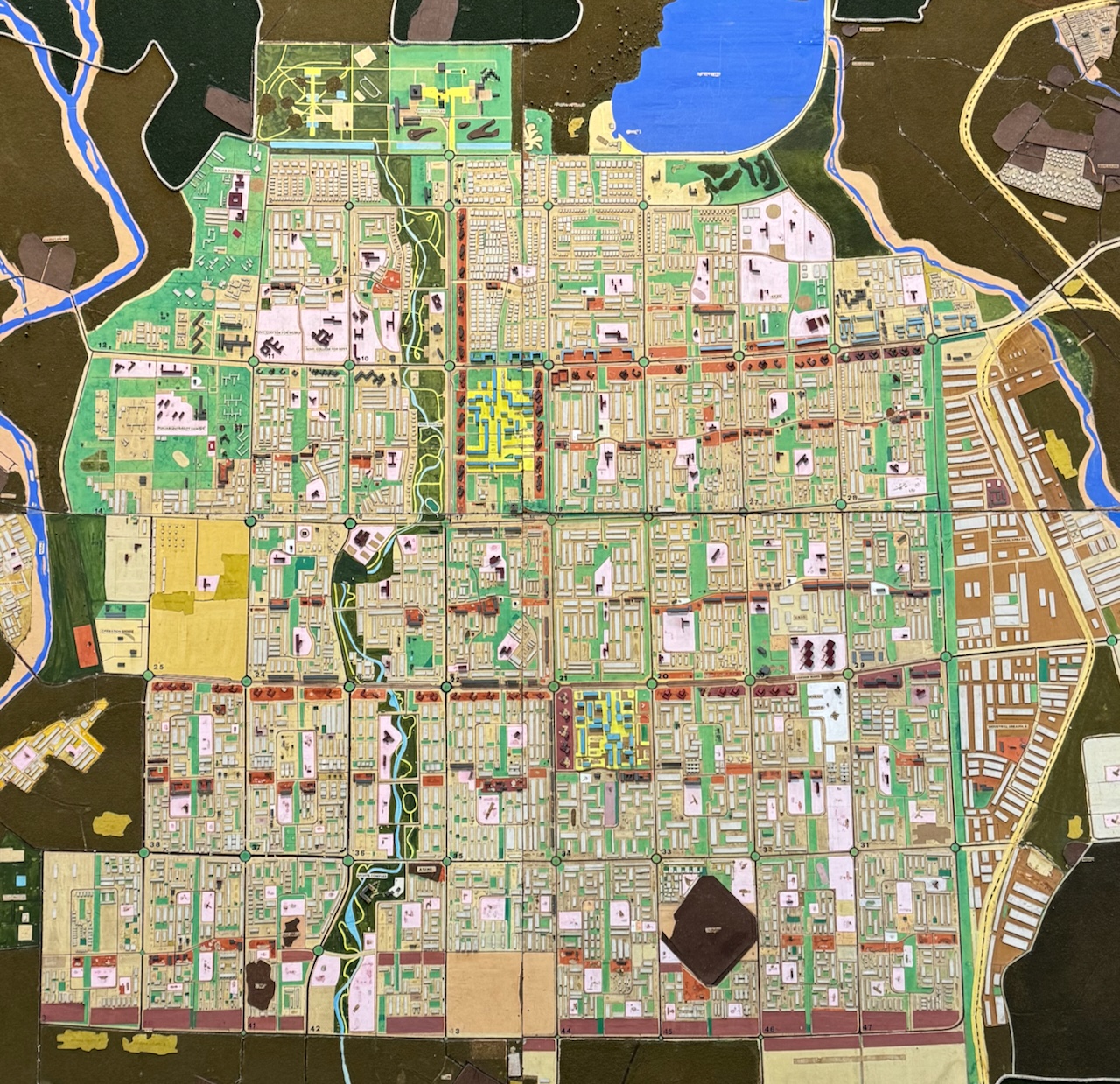
Created: 19th of April
Updated: 8th of May
This is not your standard Indian city (if such a standard ever existed), and it's quite unlike any other city I've ever been to. According to some measures, it is the happiest and most well-off city in India, by a fair margin. This is a thoughtful, organized and functional city—it was, after all, designed this way.
One has to get there first. If, like us, you are coming from Delhi with the car, you will first need to escape its gravitational pull, and pass by a small mountain close to the highway. But, as you get closer, you notice its unique texture and weird shape, the vultures circling the summit. And then you understand: it's a huge pile of trash. As high as the Taj Mahal itself, there are vehicles pushing junk and shaping the mountain. Human silhouettes are visible on the top, probably looking for salvageable objects.
And then, it's a ribbon of asphalt that goes on forever, almost constantly surrounded by buildings (it's difficult to find untouched areas in the densely populated North of India). You might make a pause at a rest stop, which might old, a bit unhygienic, but popular; it might be brand new, imitating "European" architecture with columns, statues, and way too many disparate elements.
We initially planned to stay at a hotel, but after our experience in New Delhi and closer inspection of the reviews, we don't feel confident in our choice anymore. Last minute, we booked a big flat on Airbnb, in one of the city center's sectors, that could accommodate all of us.
As we get closer to the city, there's at first no significant difference from what we've seen so far. But then, as we enter the actual city, the difference is striking.
The city is organized as a grid. The lines on the grid are large boulevards / highways, bordered by trees and cycling lanes. Most of the buildings are no taller than three floors, which means they're pretty well hidden by the trees. This gives a vibe of openness, and a feeling of not being in a big city.

These large roads a linked by roundabouts, and draw rectangles approximately 800m by 1200m in size. These are called sectors and are the unit of thought for this city.
During the partition of India in 1947, the capital city of the state of Punjab ended up in what is now Pakistan; hence the need for a new capital city. The design was initiated by Albert Mayer, and continued by Le Corbusier. The latter is responsible for the bock design, and has designed many buildings throughout the city.
Each block is meant to be a self-sufficient unit, containing housing, schools, shops and parks, which means people don't have to travel far for everyday needs. At the center of each block, along the smaller side, is usually a main road with all the shops, and the rest is more residential and quieter.
The city itself follows a human-body-like plan—according to Le Corbusier—including the head (Capitol complex in sector 1), the heart (City center, sector 17), the lungs (a long, almost continuous park that stretches the whole length of the city, easily seen on the map above), the intellect (university and so) and the circulatory system (well-defined road system through eight levels: V1 are the biggest roads, separating the blocks, going down to V7 as you get "deeper" into a block).
Our flat is situated on the top floor of a modern building in the North of sector 15. Actually, most of the buildings look quite modern, the streets are pretty clean, and the mood is unusually... peaceful, which is a very welcome change for me. The flat itself is, well, basically perfect. It's cozy, spotless, spacious, and has all the necessary equipment; and I actually feel at home here.
After eating, I go outside for a walk around the neighborhood. The park in the center of the north part of the block is pretty relaxing. There's very little traffic in these residential towns, no rickshaws, you'd almost forget you're in India.
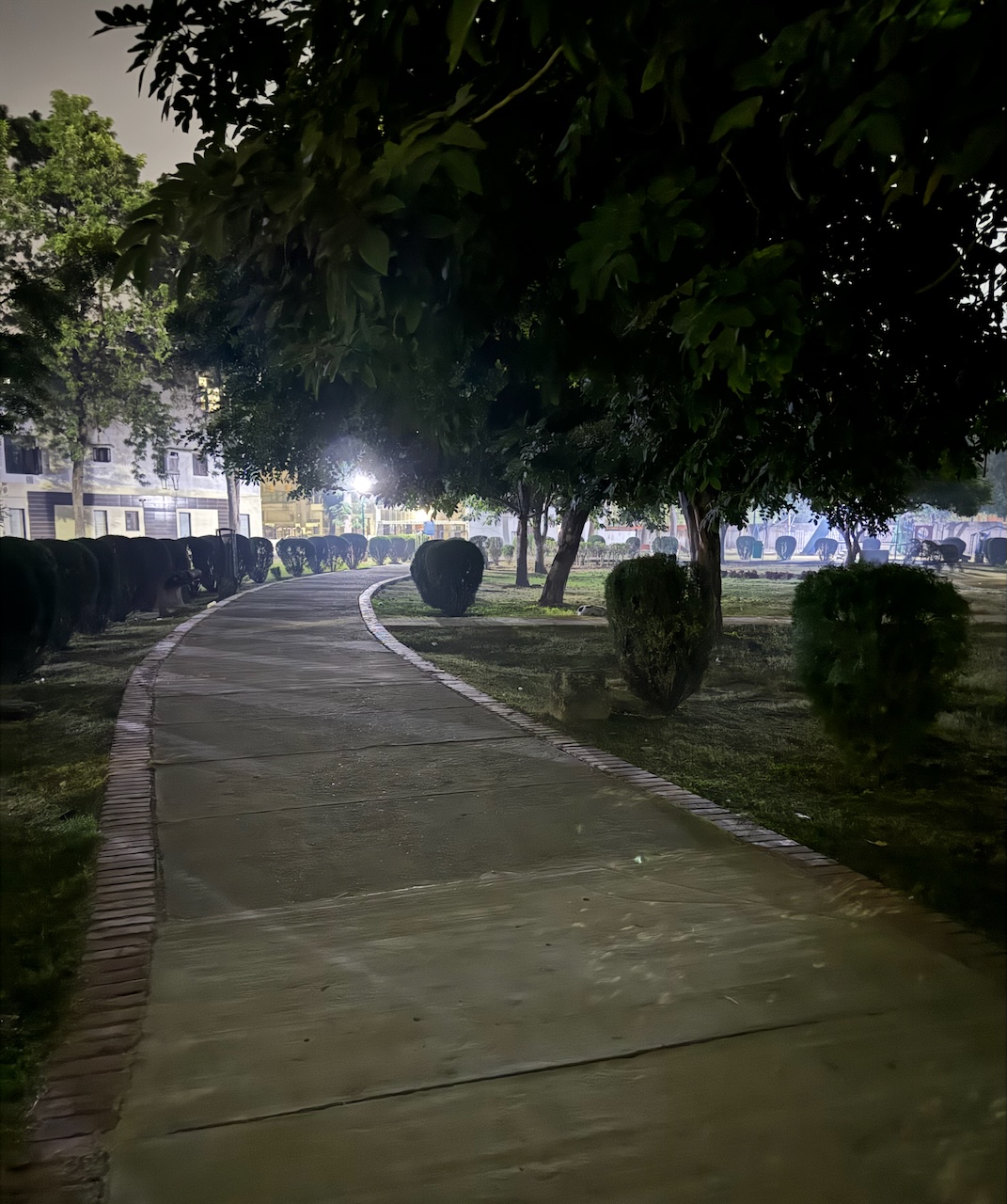
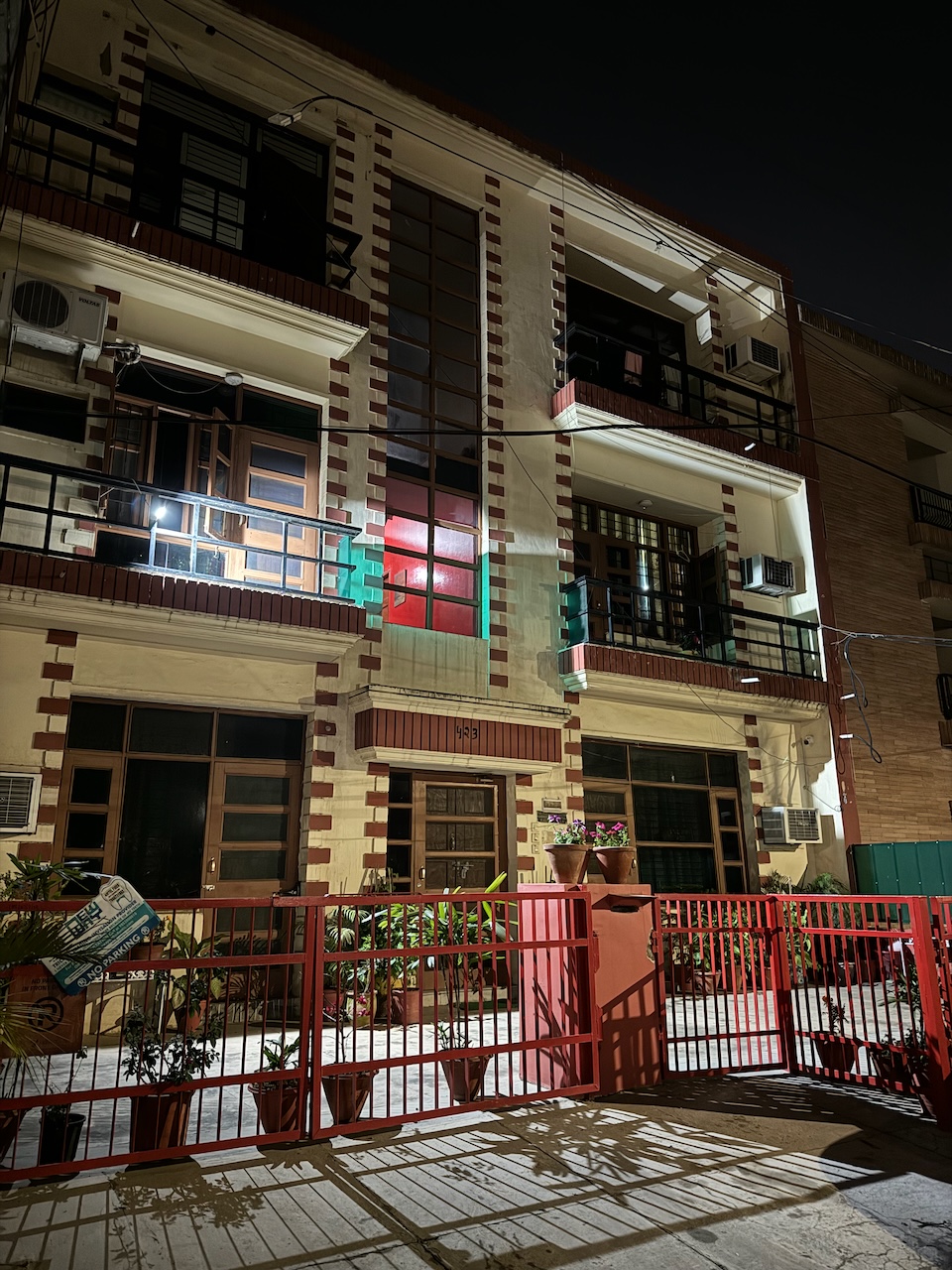
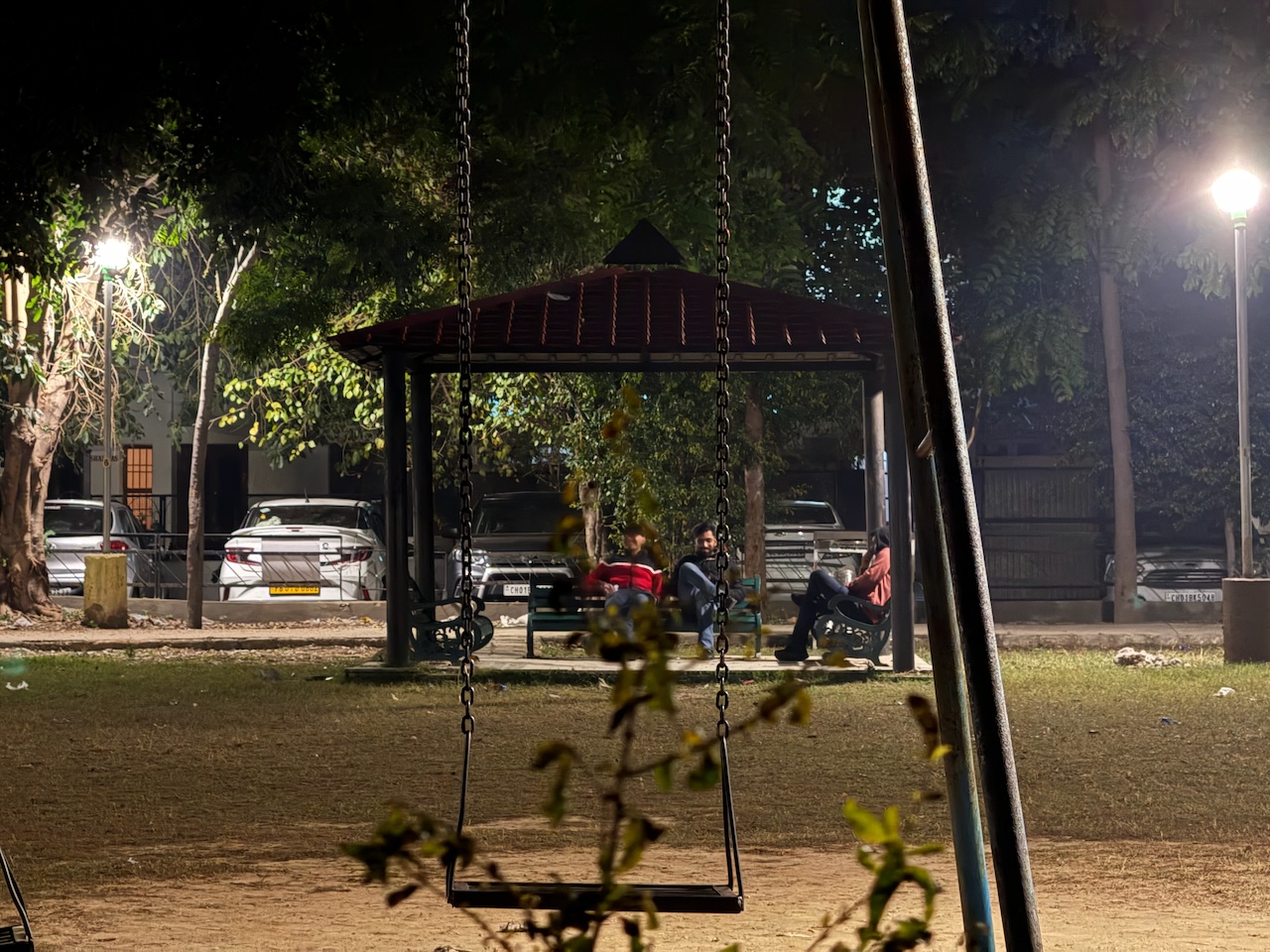
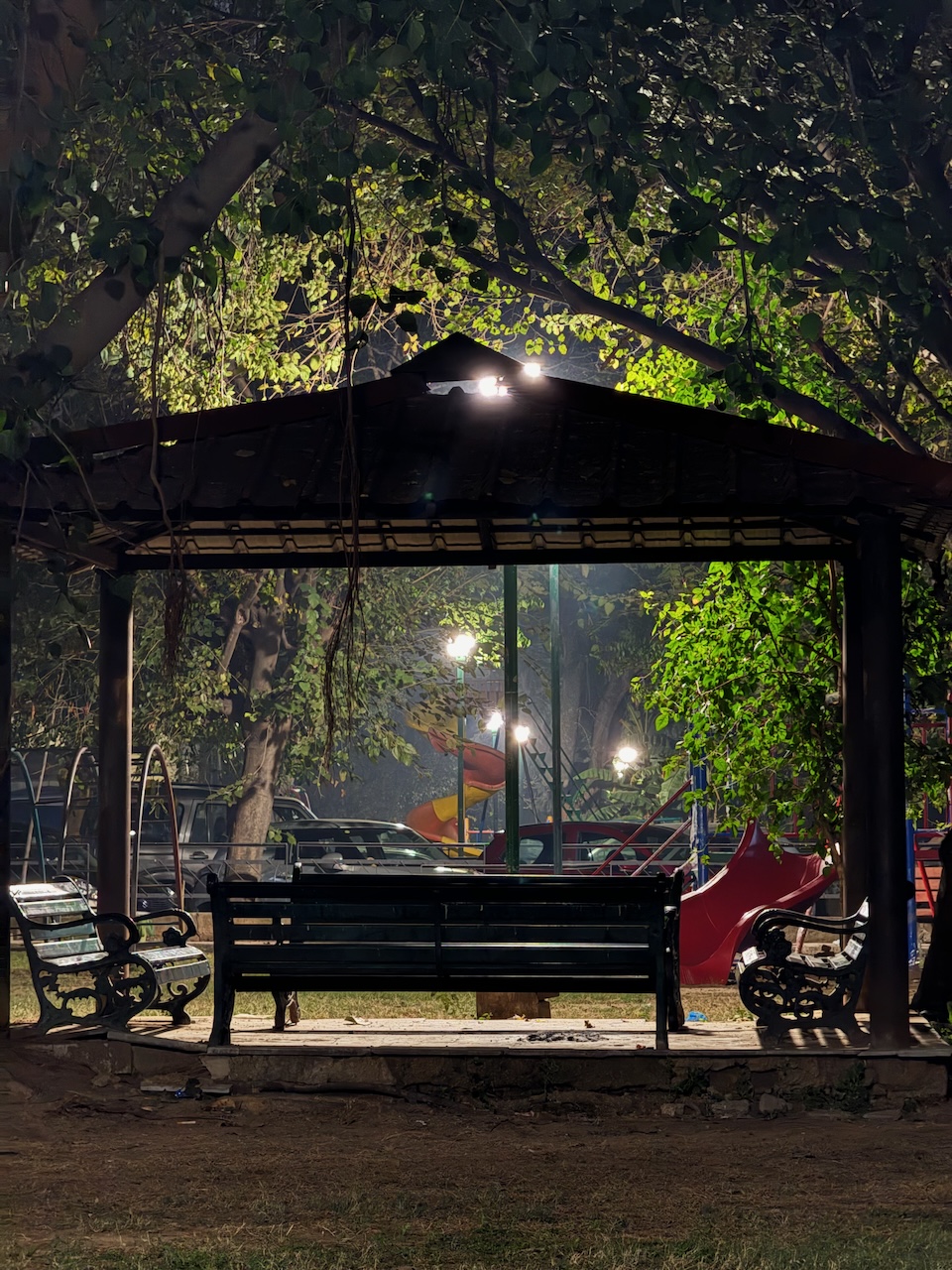
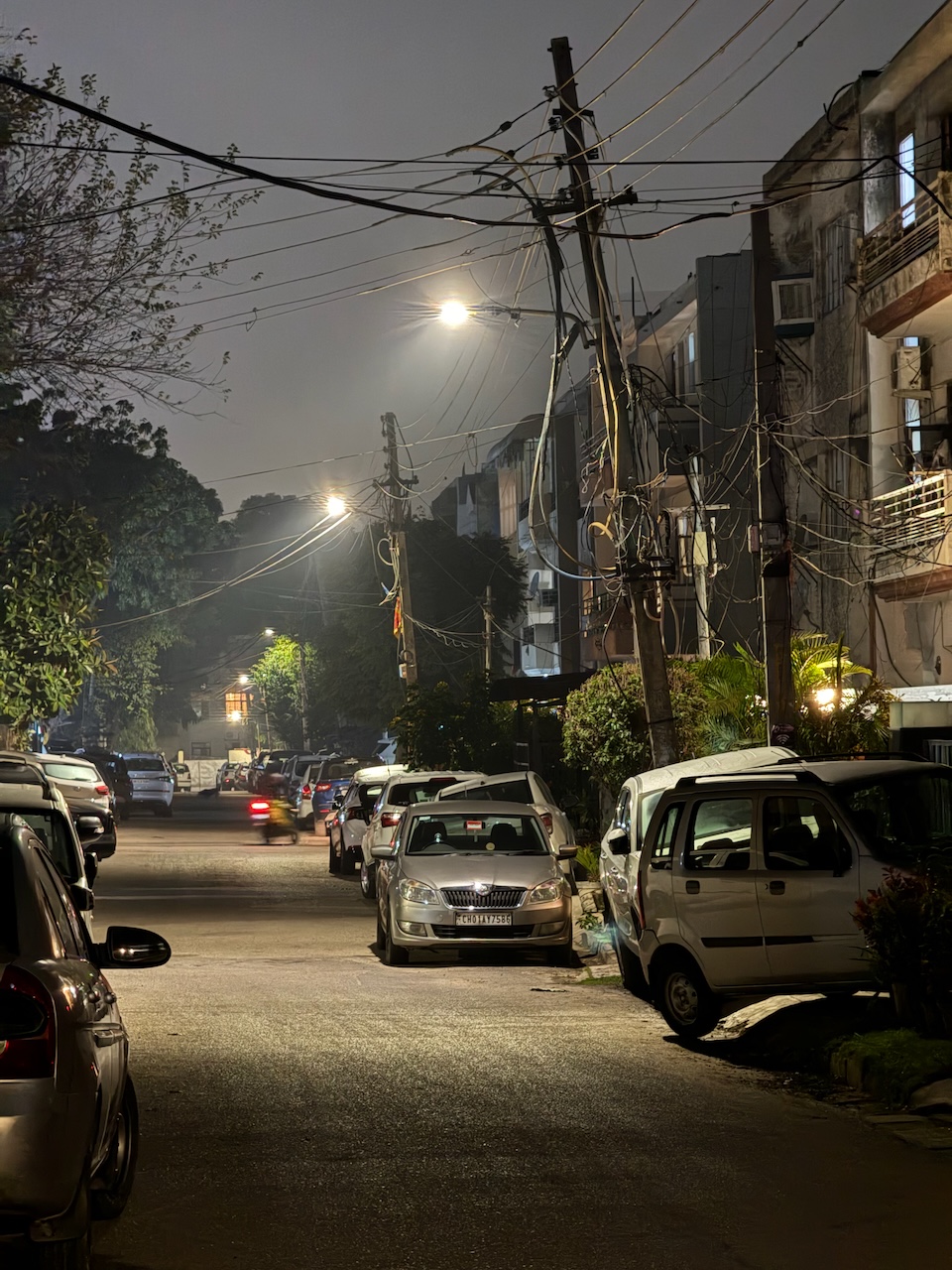
The following day, we drive (or rather are driven) to the head of the city, where the government buildings are. The army guards the area and checkpoints leading to sensible facilities. After erring some, we find the tourist center, where we find out we can only visit the area during a guided tour... That's for later then.
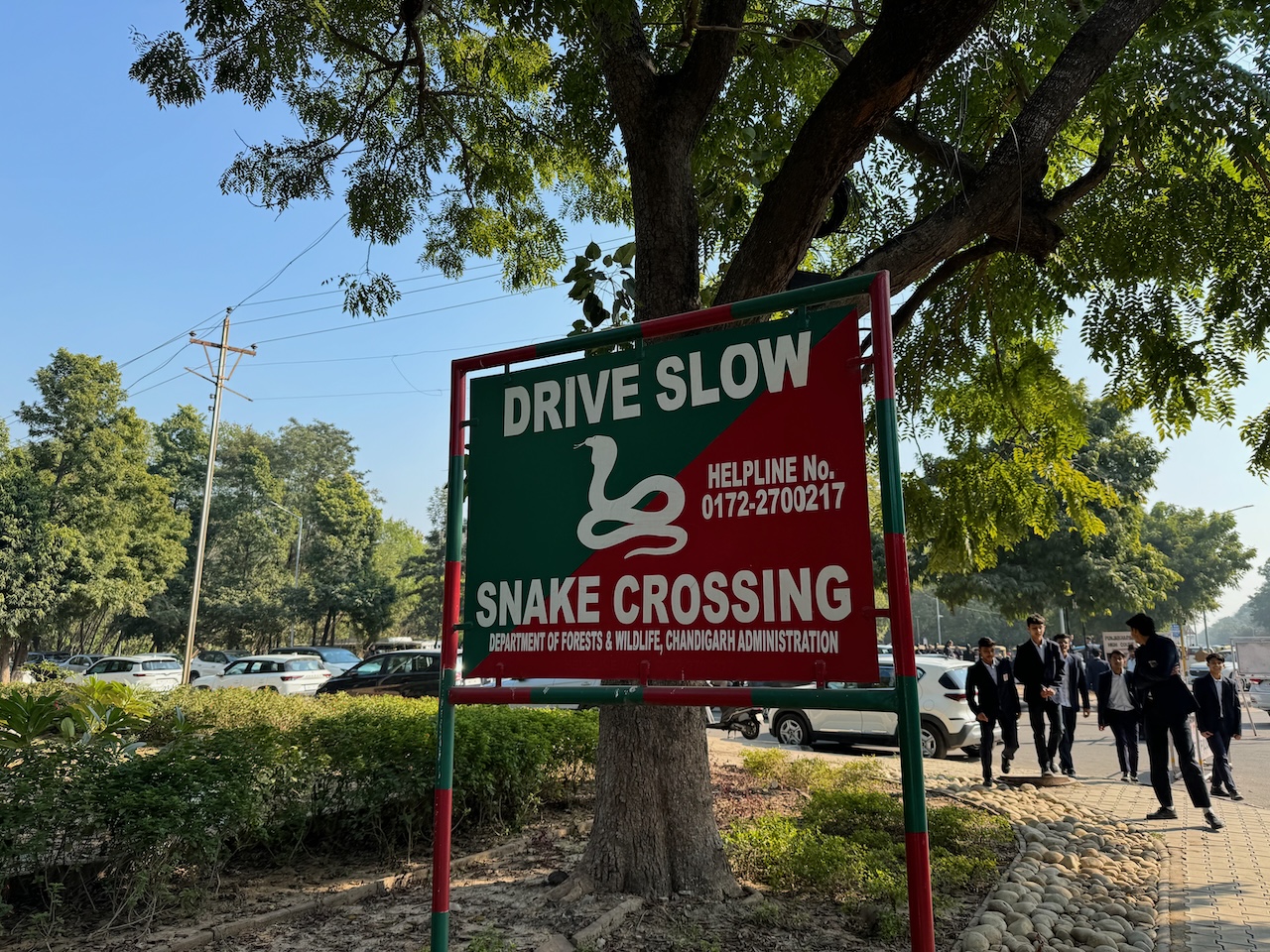
But a short walk away is Rock Garden. On the way there, A. and I cross path with a group of maybe twenty young students (you can see them in the picture above). They all gather around us saying hello and wanting to shake our hands.
They ask A. to say something in Hindi. He hesitates a bit, but finally says it, which makes everybody laugh. I wonder to this day what the word meant...
The entrance fee to Rock Garden is the same for locals and foreigners, which is quite remarkable. This place was built by a government official, at first in secret, and using recycled materials.
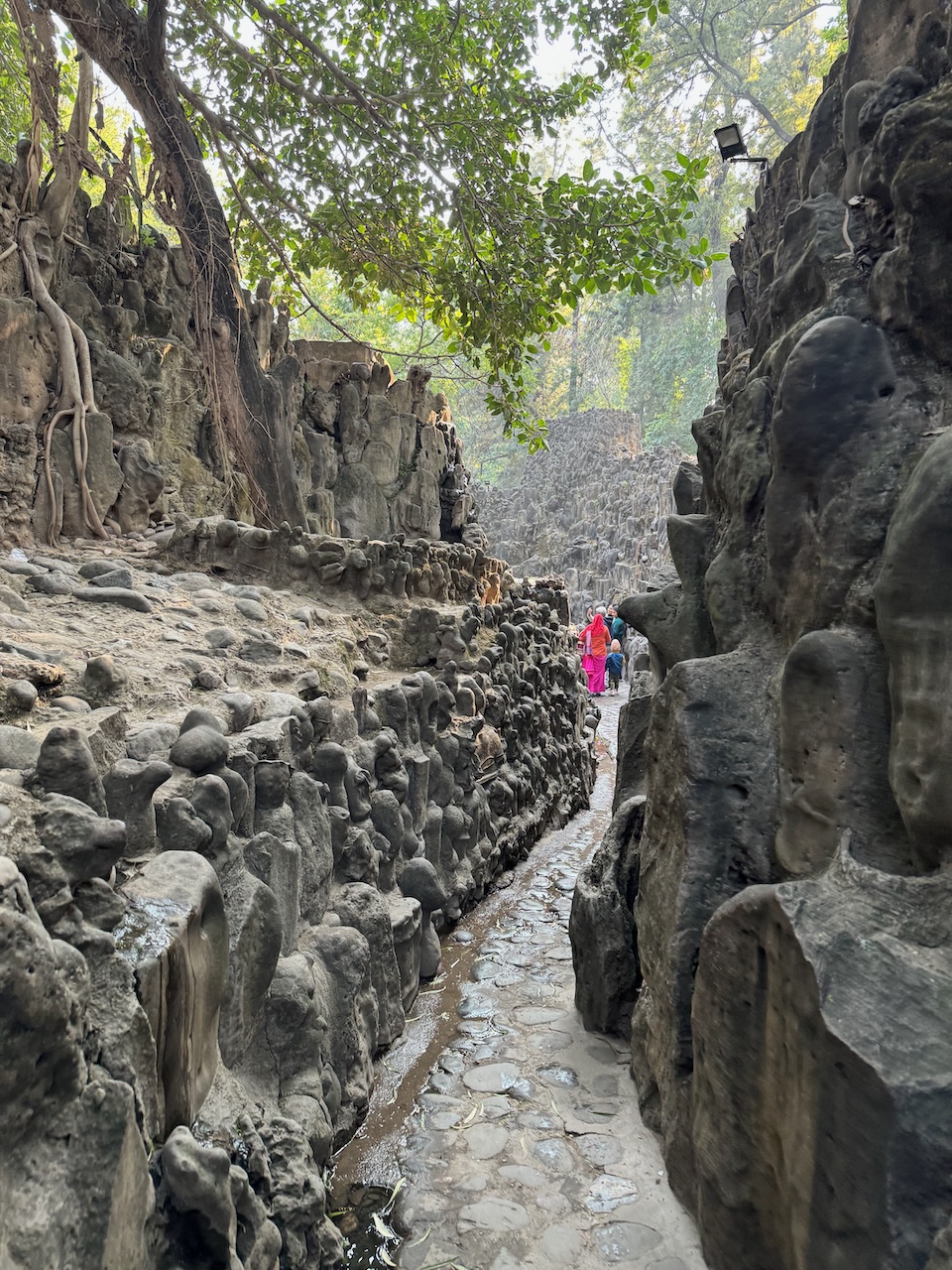
There's only one path to follow, and it never stops turning, going up and down, as if trying to pack the longest way through a compact space. It's a very unique and relaxed place.
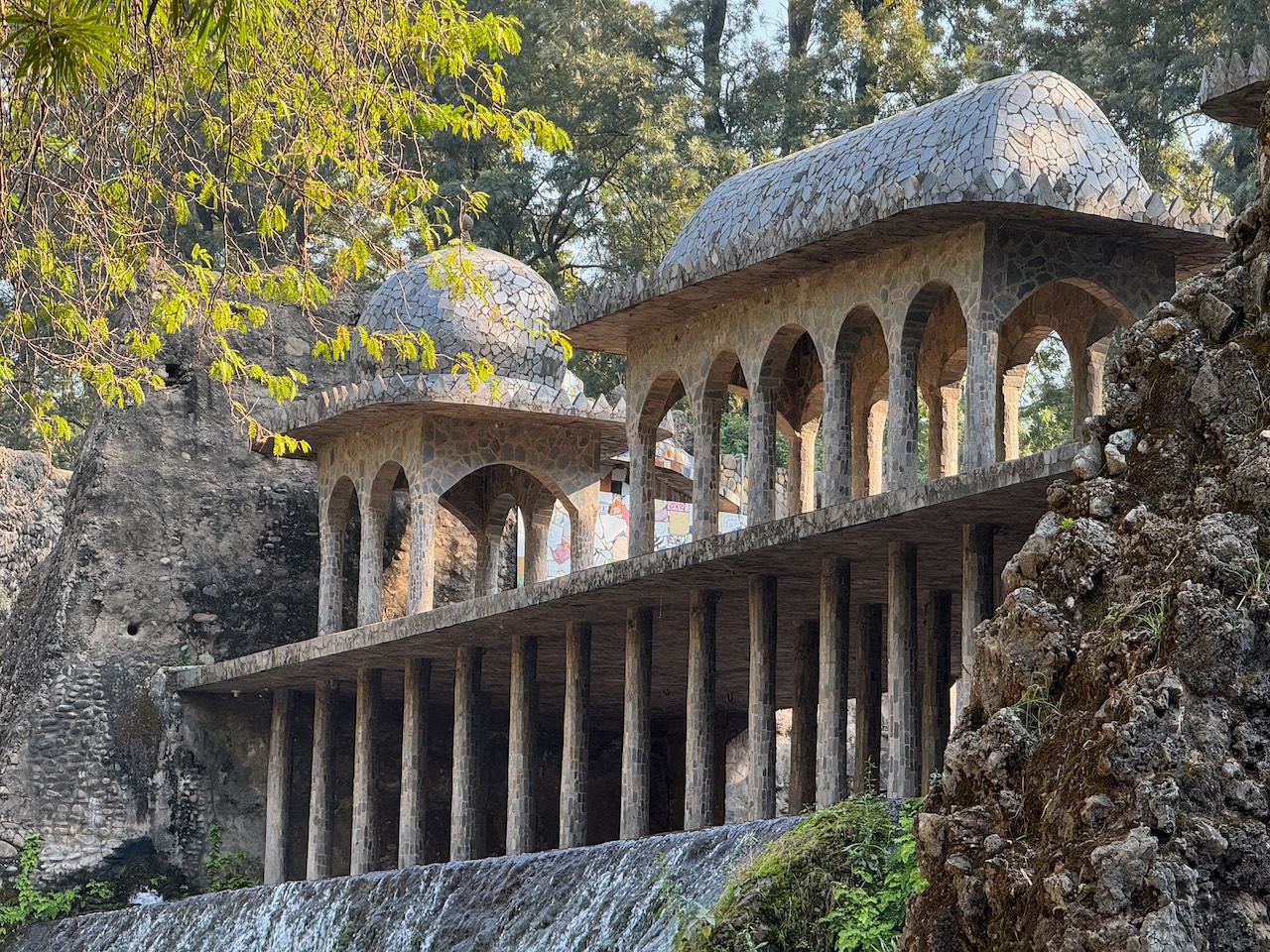
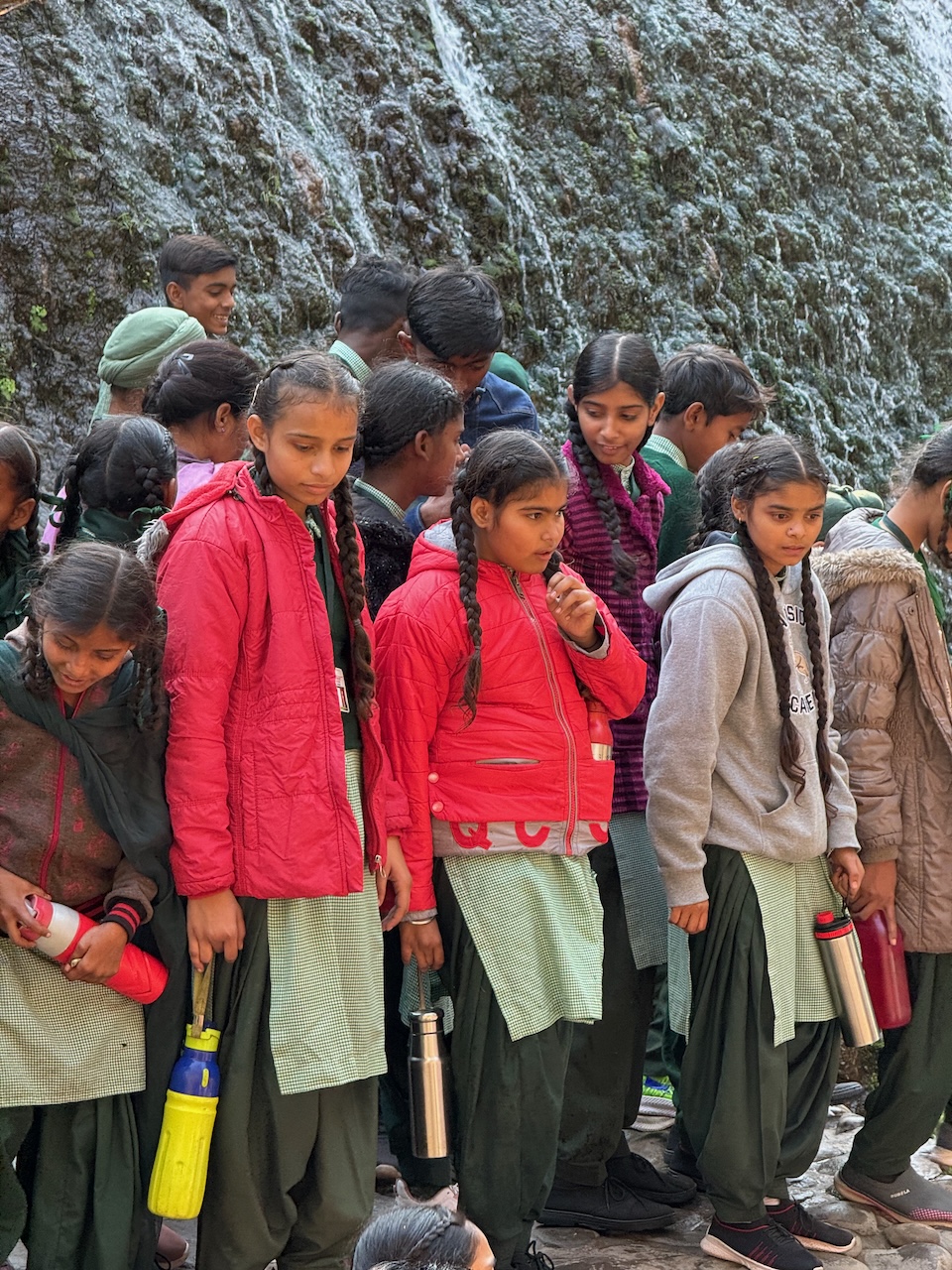
A bit further from the main garden, but still within its bounds, is a large plaza with many swings and a doll museum. It's a bit random, but once again, relaxing.
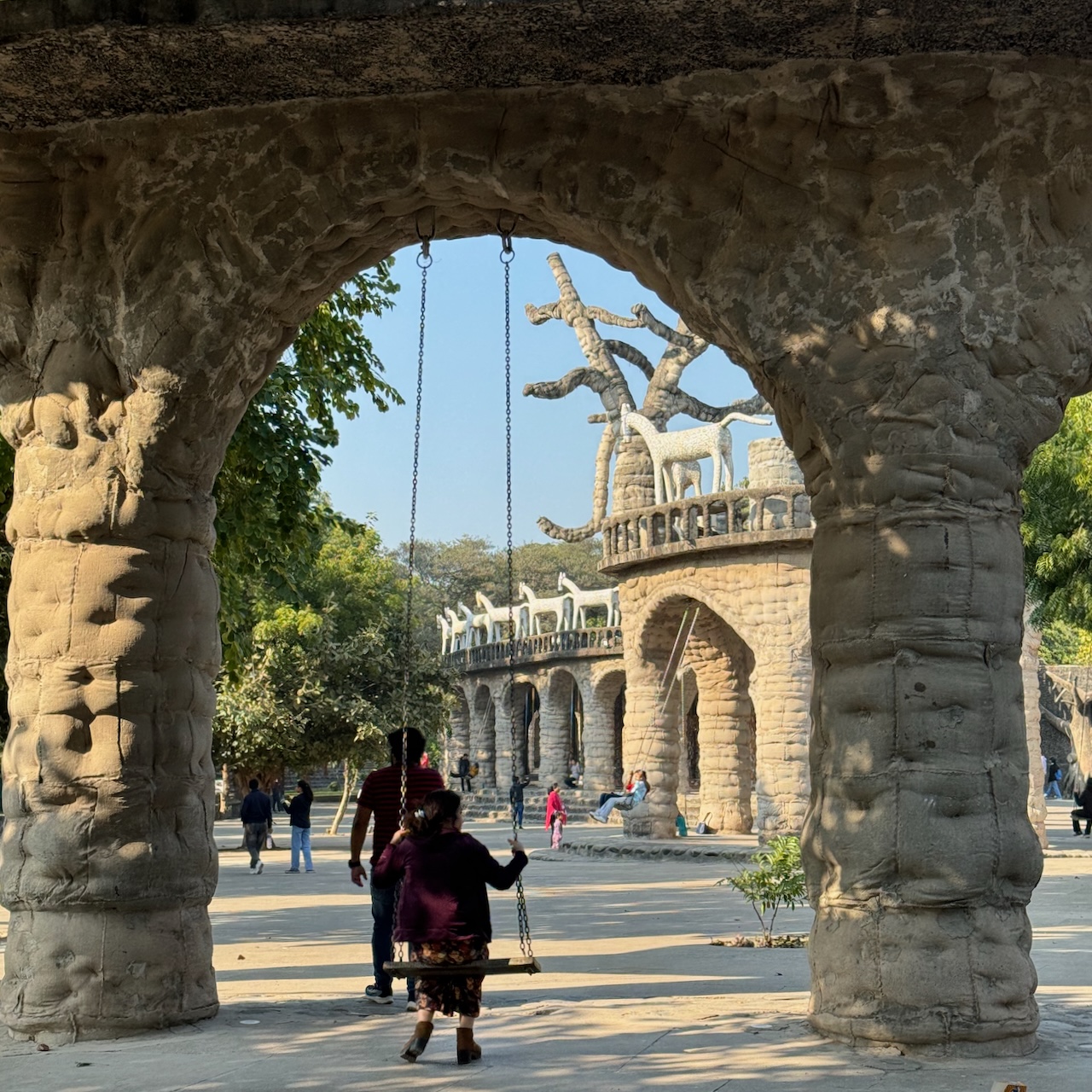
If you take a look back at the map above, you can see the head at the top (duh), a green square containing the government building. To the right is a smaller green square, containing Rock Garden. Still to the right is the Sukhna Lake, which is actually a reservoir.
The southern part is a long paved way with almost the same feeling as a walk along the sea. There's an area with restaurants, cafés, and pedal boats for rent.
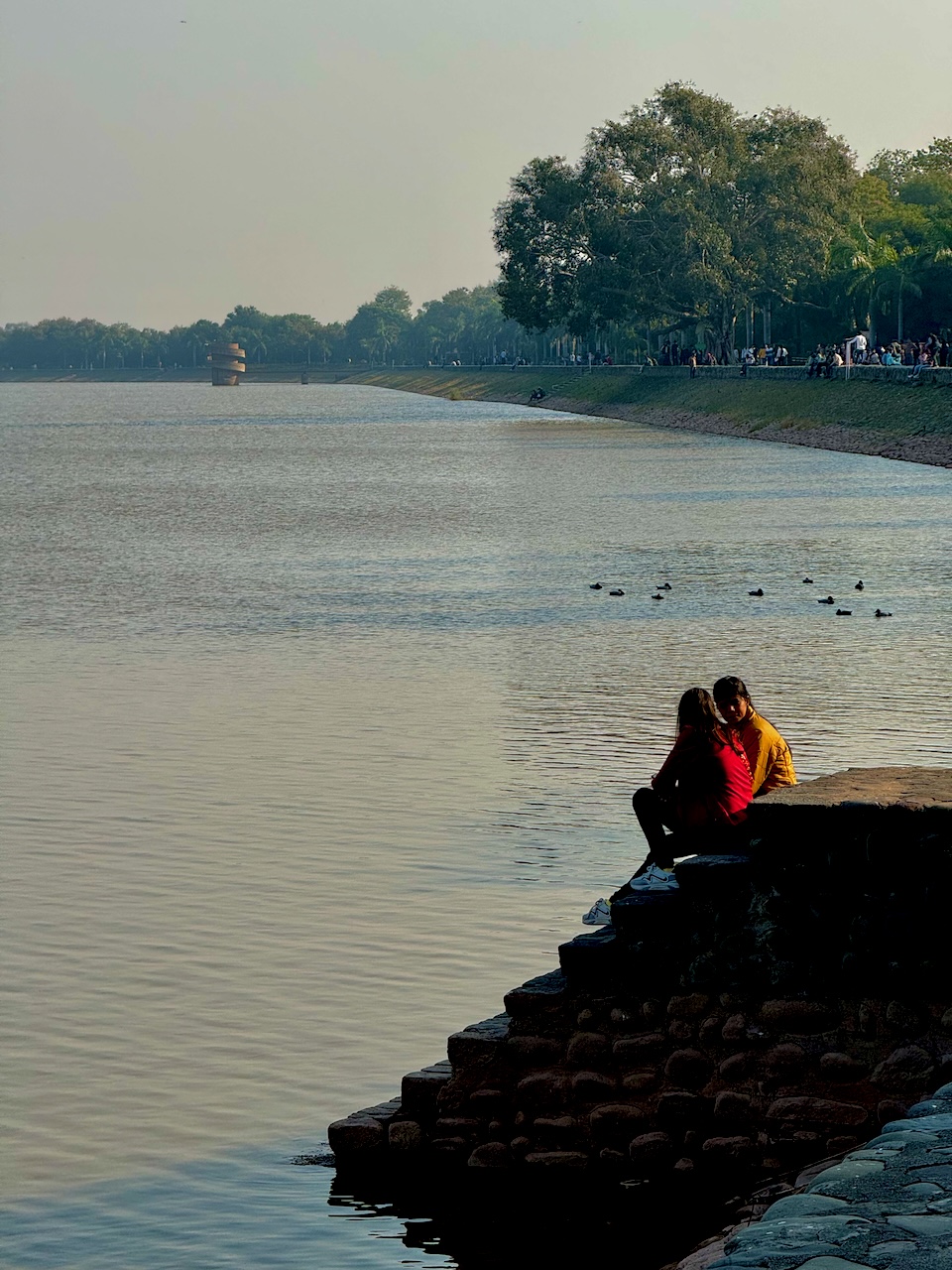
On the other side, the path is not paved, it's even called Jungle Trail. It's a bit much, but we do see monkeys, peacocks, a doe and... chicken.
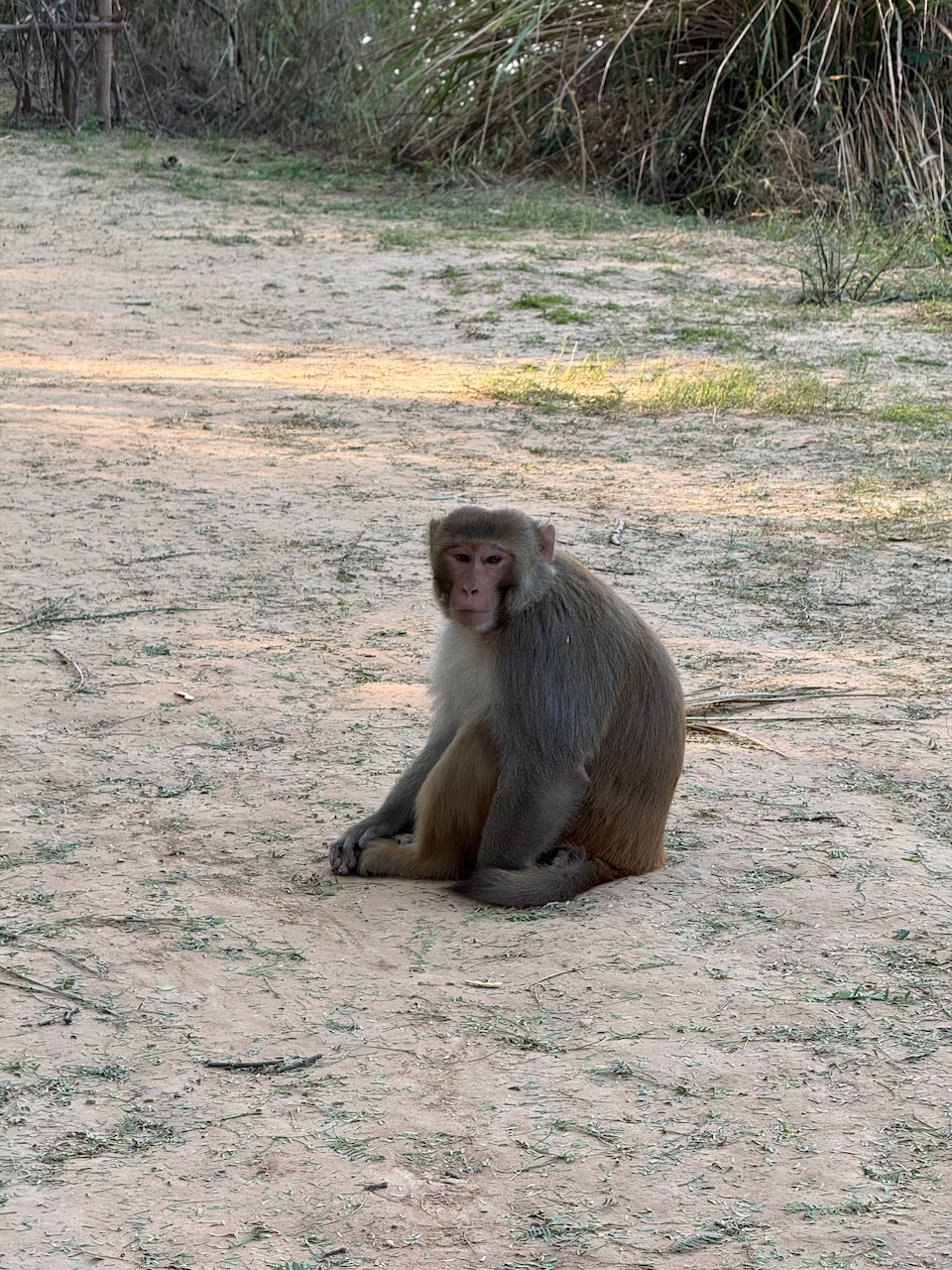
Every time I'm near those monkeys, it feels off. It's probably because I'm not familiar with them and they look like tiny hairy humans, but I never quite know if they're just chillin', or if they're gonna try to steal some food from me.
Going around the lake makes for a solid walk. At this point, I'm still only with A., and we're meeting the others near the start point, where the cafés are. We decide to rent a pedal boat for half an hour.
For this, we need to get a ticket twenty meters from the pier, in a first booth where a ₹500 deposit is taken. Then, we exchange this ticket at a second booth for an electronic card, which we have to scan at the pier, making sure we respect the 30-minute time limit.
As soon as we have the boat, we go where nobody else is, on the other side of a small island, because of course. After a few minutes, we're told to go back to the other side. We can't do something normal, so we go head-to-head with the other boats, pushing them a bit. It's a lot of fun for everybody, including the victims1!
I'm sure the employees in charge of lending the boats saw us, and even probably judged us. They didn't say anything, though.
In sector 12, you'll find the Chandigarh College of Architecture. It a very Le Corbusier building: functional, raw, with geometric shapes, and lots of light.
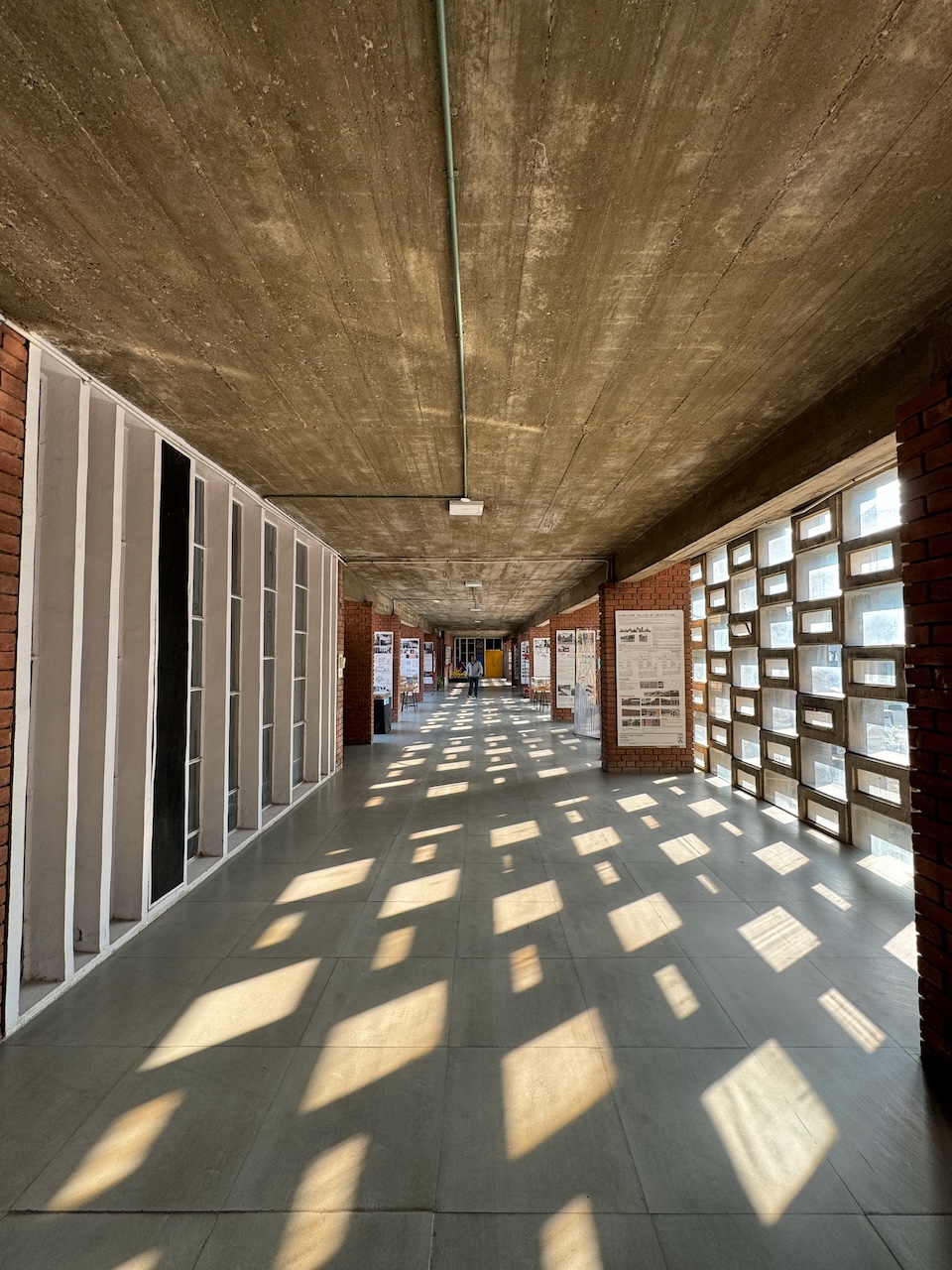
The place doesn't look like it's supposed to receive tourist visitors, but it's open. While meandering inside, the director of the school finds us. She's so kind as to open the exhibition room for us, and talk to us about the college—and then about the controversy of original vs. non-original pieces of furniture...
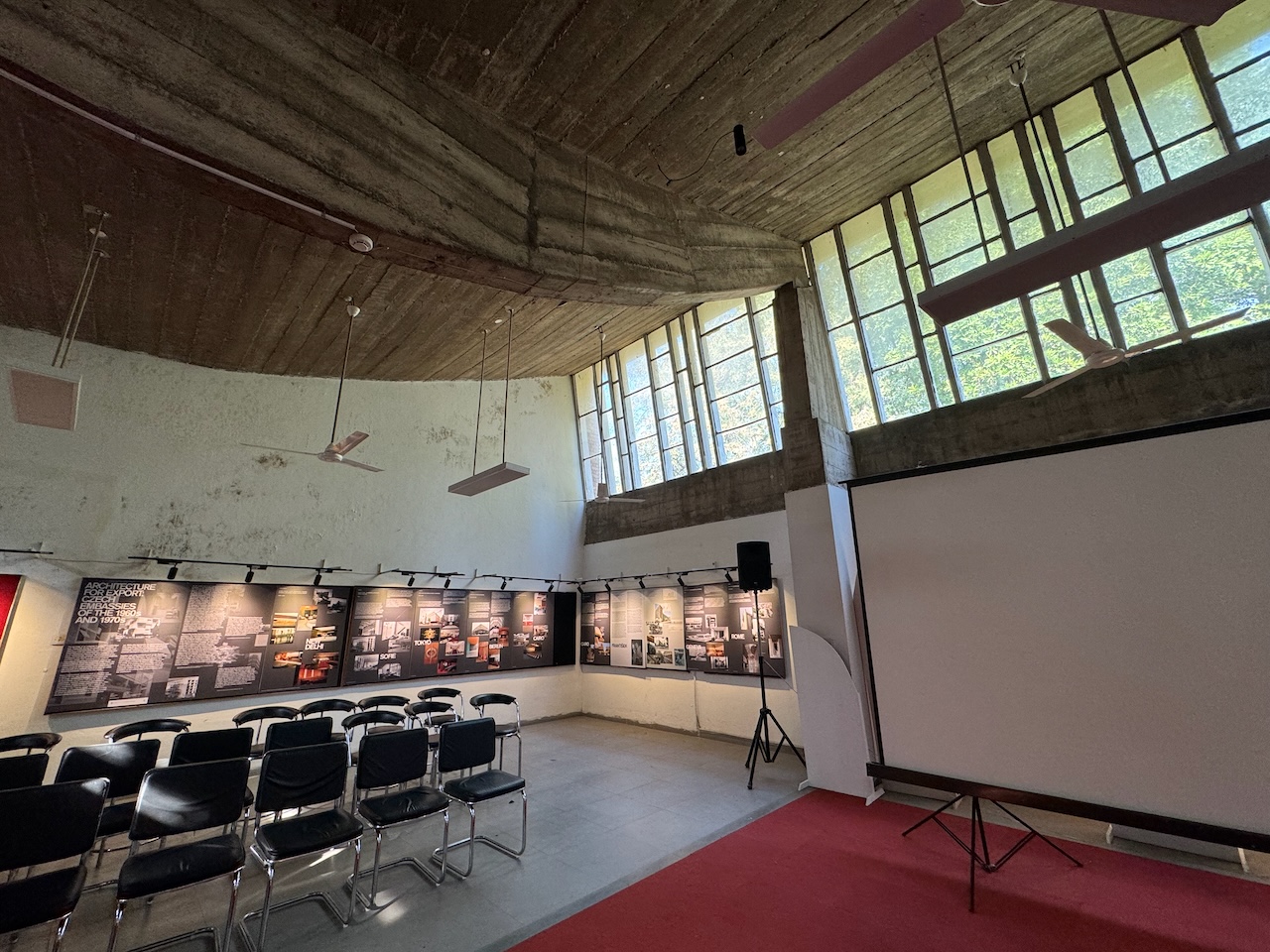
I find the place inspiring, but also unsettling by its brutal design. It's certainly a different style. In one of the room, we find the numerous models made by students for their projects.
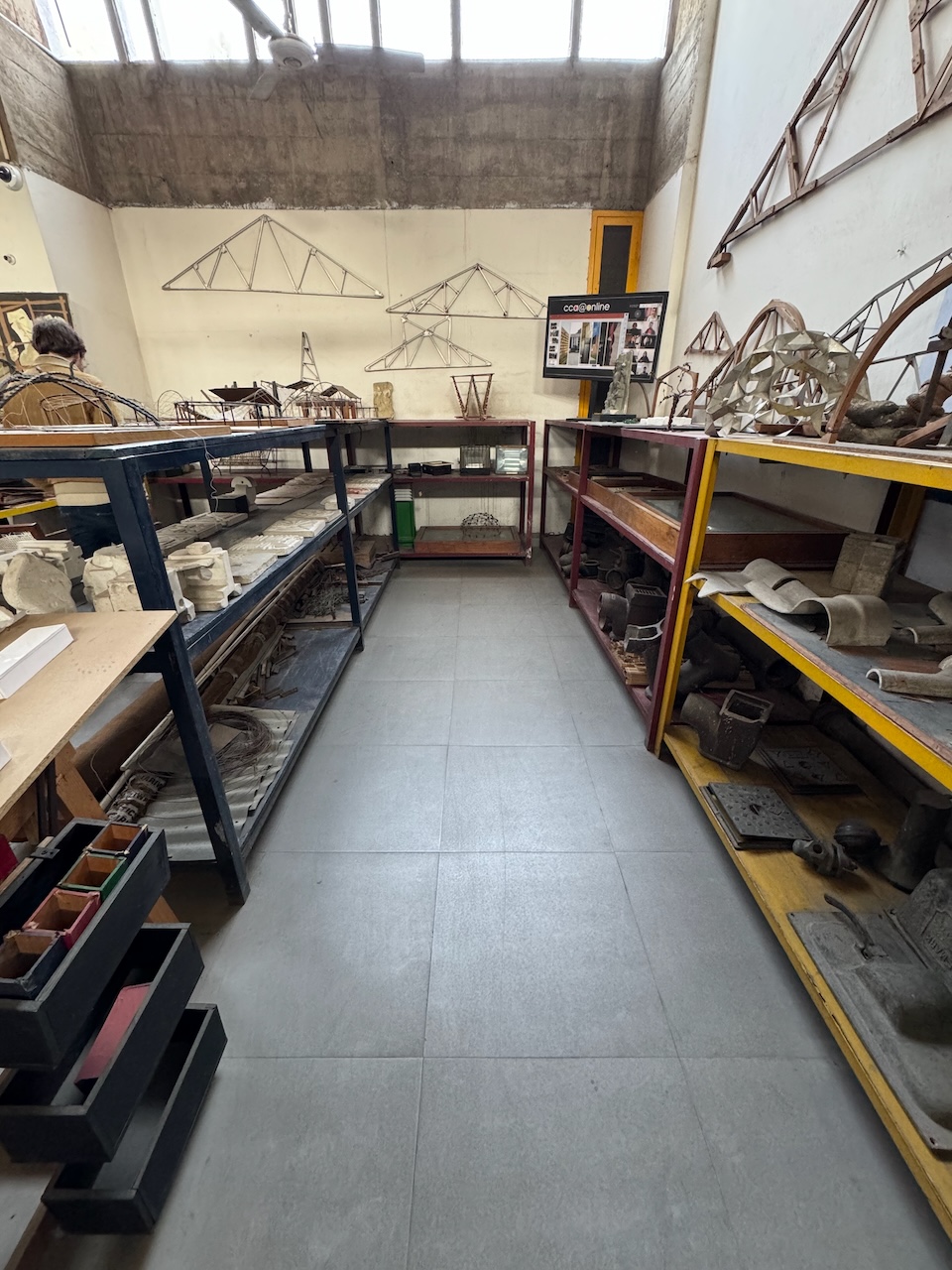
In sector 5, there's another striking example of the city's peculiar architecture, the Maison Jeanneret. It's been turned into a museum, although the interior is quite minimalist.
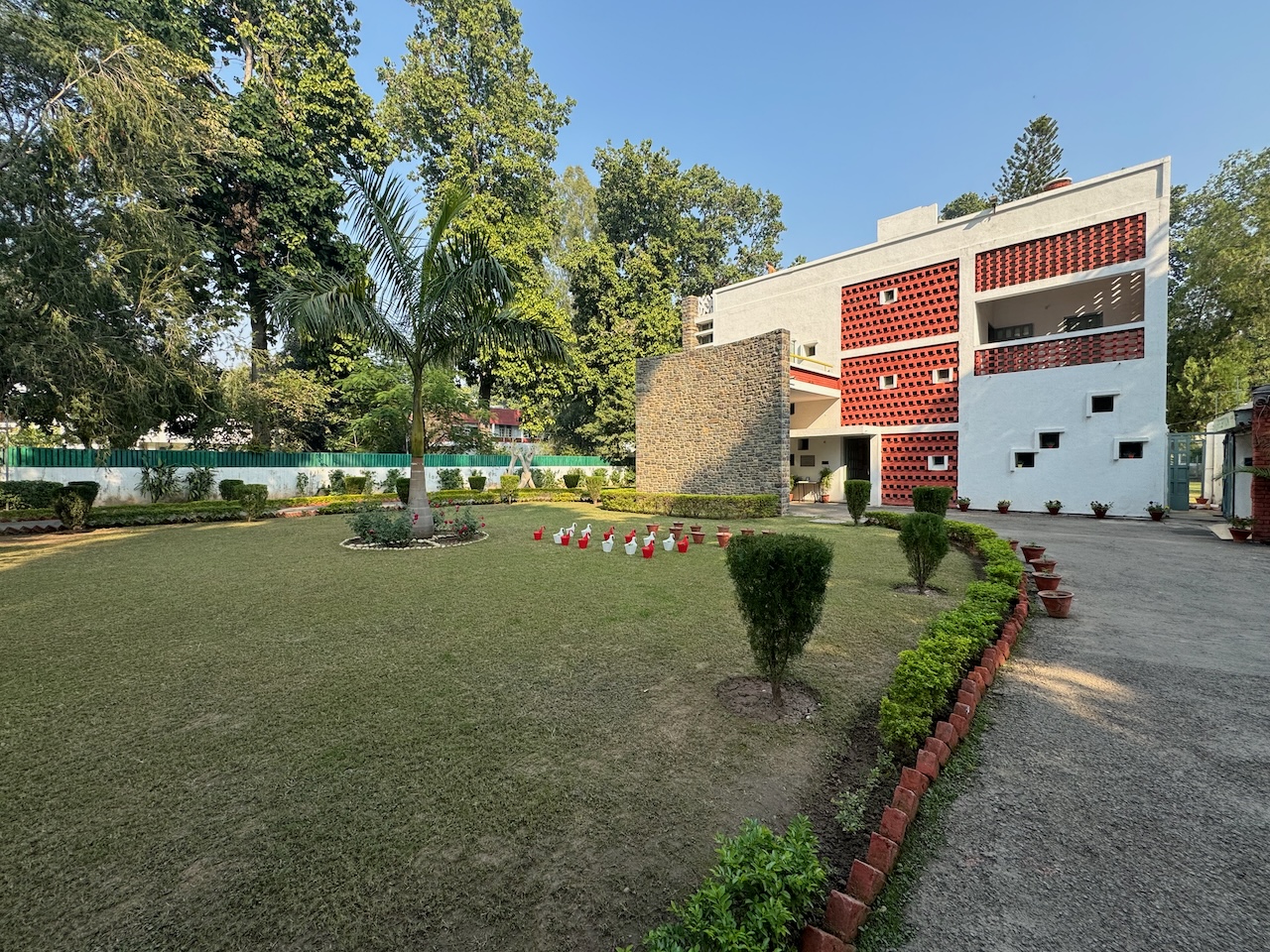
Starting from the tourist center I mentioned earlier, we begin our guided tour. But first, every passport is thoroughly checked and copied. Here, the organization is dubious, and punctuality is not even a valid concept. (But everything works out, eventually.)
We are supposed to visit the Secretariat first. But we just wait there in front of the military checkpoint... (When cars come in, somebody checks its underside with a mirror. But they do not bother to check the trunk. Interesting) ... aaaand we can't go in, because there's a meeting going on. We specifically came today as we were told there we wouldn't have been able to go in on the previous days. We're only able to look at it from afar. It's absolutely massive, its majesty somewhat lowered by the presence of many disorganized AC units.
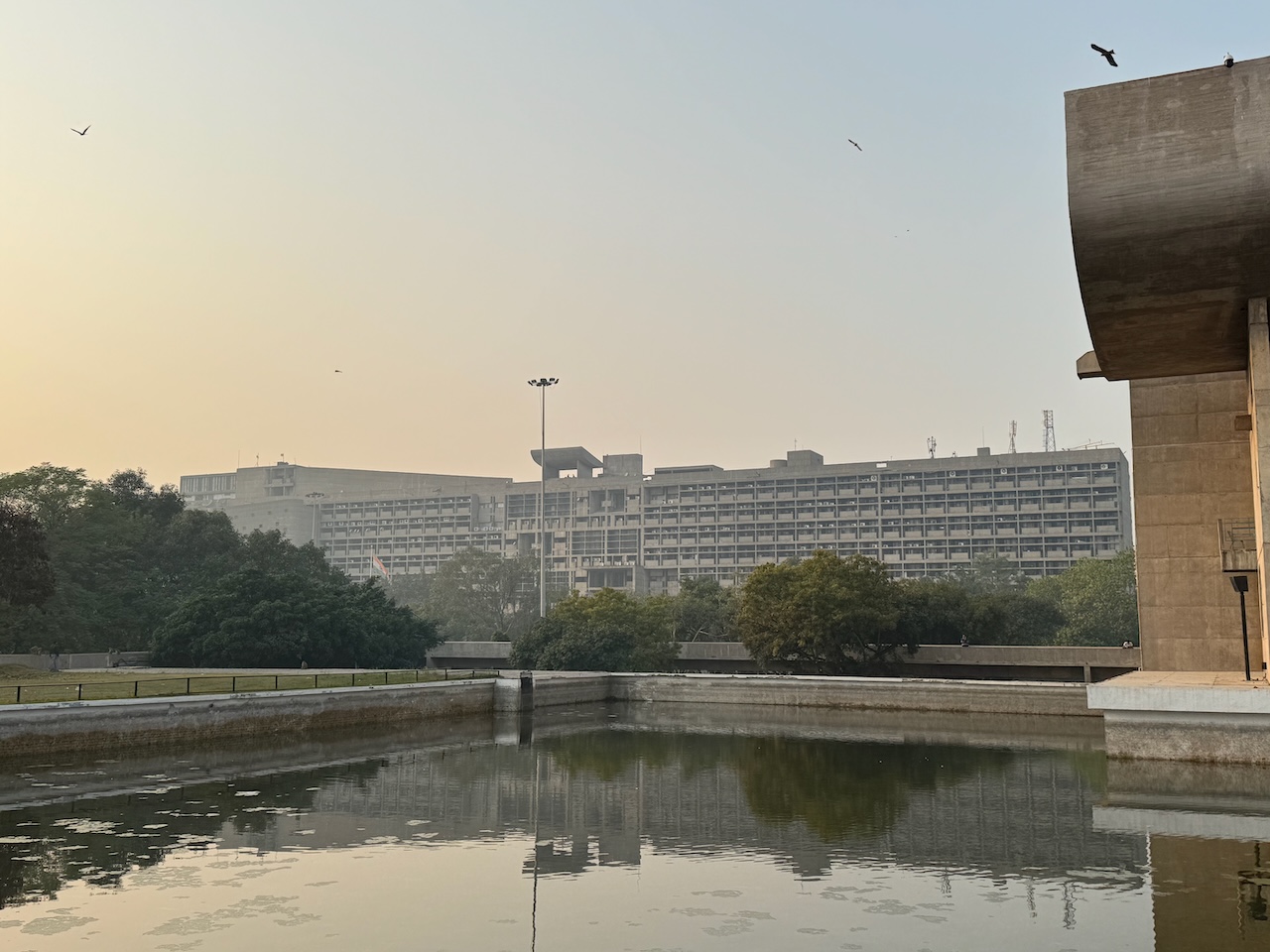
Next stop: the Parliament. We have to deposit our phones and bags on the counter inside. Going up two inclined ramps, we find ourselves in some kind of in-between world. We are in the building, but outside of the parliament chamber. The space feels like was made by an underground car park designer, who read too much science fiction at the time. It's huge, mostly empty except for the very tall pillars (like in the picture here). The parliament chamber itself looks... well... it's... I'll leave you to judge, take a look at this Reddit post.
This place is starting to give me strong 1984 vibes, and the rest of the visit doesn't help. Leaving the parliament, we go up a bit, and end up on a huge empty concrete plaza. There's a couple of monkeys and trash here and there.
What doesn't help is our guide. He's a guide only in that he shows us the way; he's otherwise completely unhelpful. For every interesting places, he gives a few figures (the kind you could find with a single google search) and moves on. Quite disappointing in this regard, considering the original history of the city.
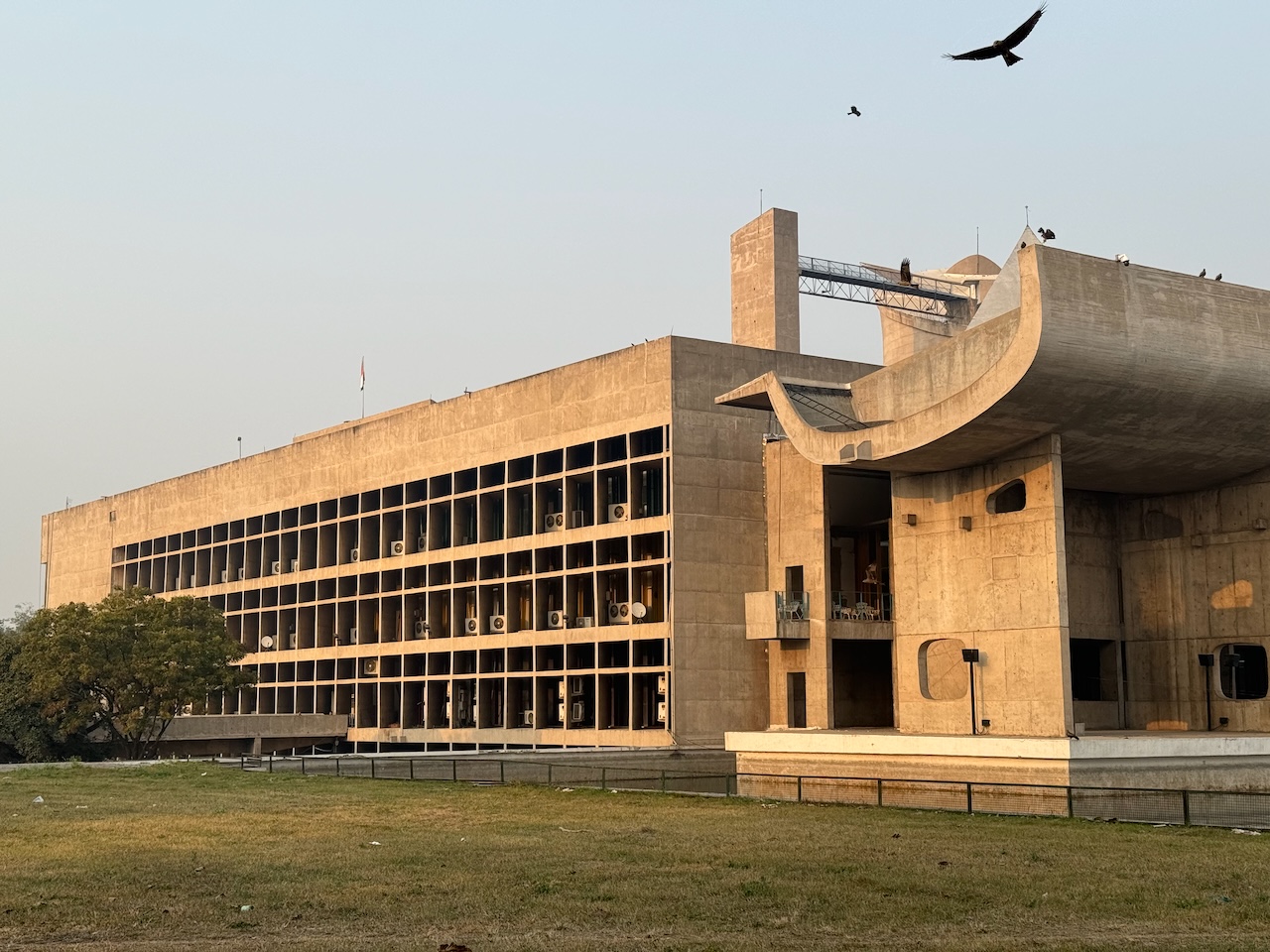
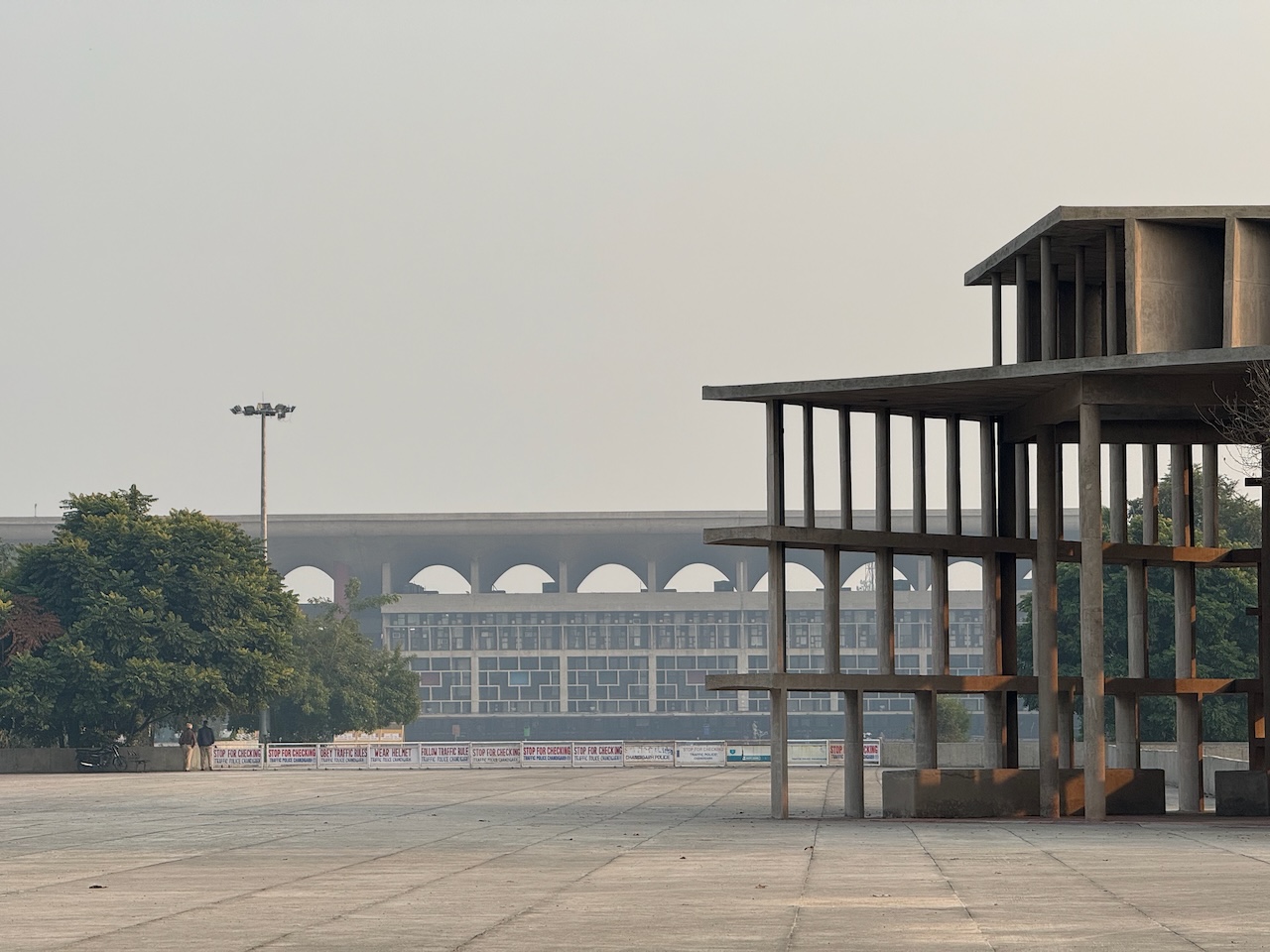
And to finish, we're shown the open hand monument. It's an icon of the city, and a representation of "the hand to give and the hand to take; peace and prosperity, and the unity of mankind".
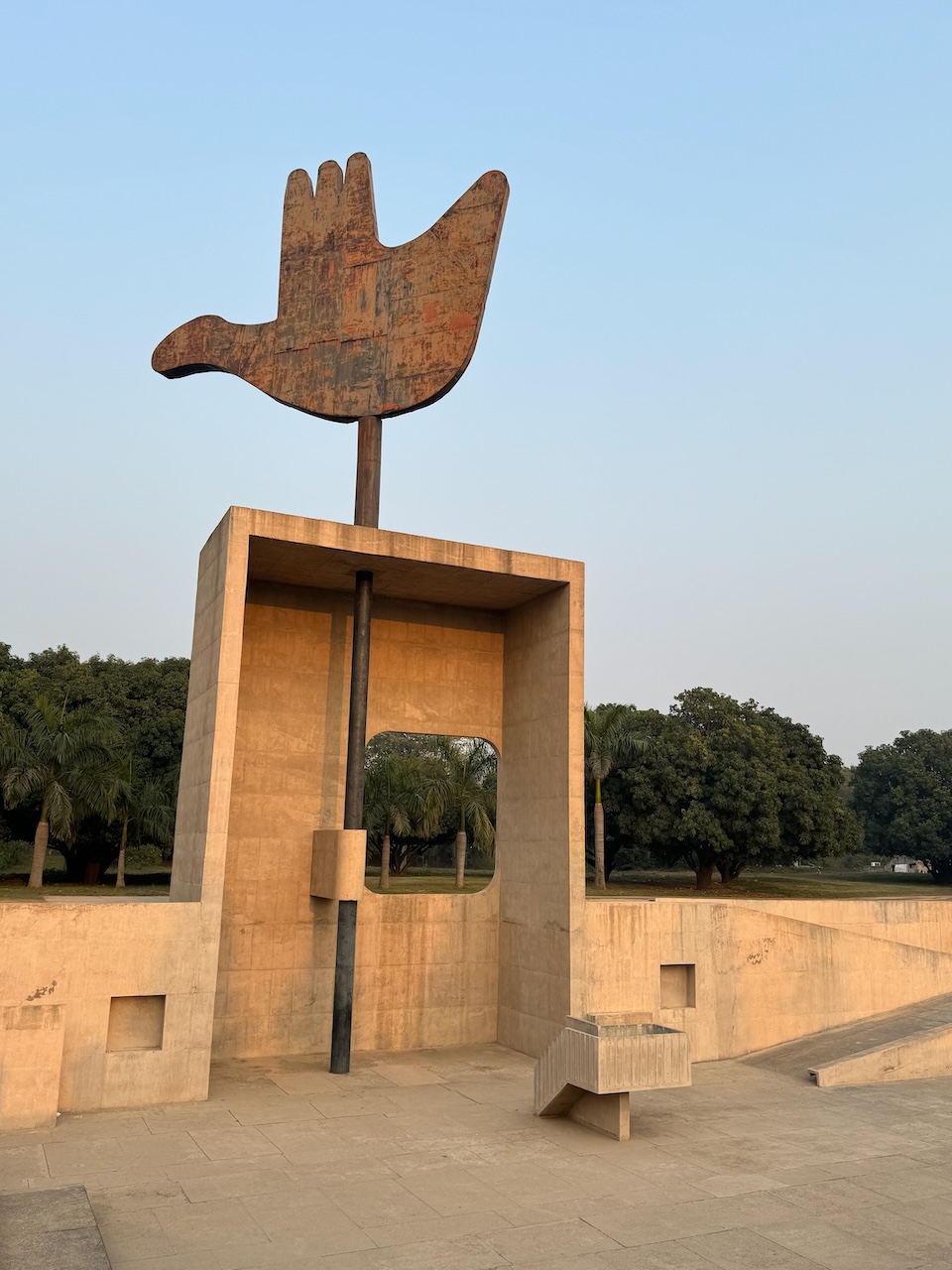
I'm overall disappointed in the visit. It's hard to enjoy such a place without context, which the guide didn't provide. It's not beautiful, but it'd have been interesting to know why the architects made it this way, what mindset they had. I don't feel like I understood this place...
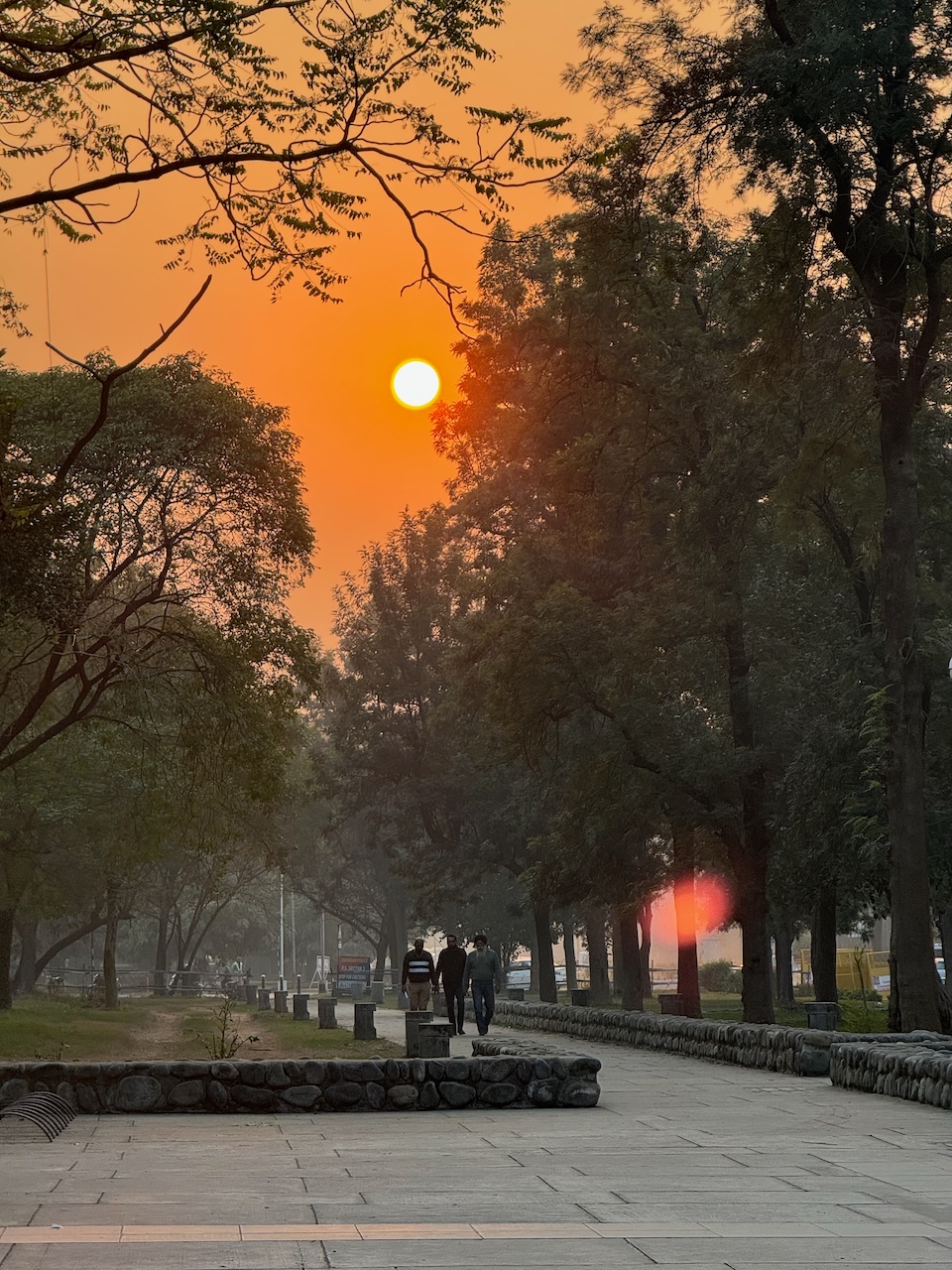
The rest of the story is a lot of eating, and a bit of drama...
There is one last thing. In sector 17, the center of the city, there's a map of Chandigarh on the ground, made of metal. And on this map, you can see the representation of itself. But I really like maps, and you might not agree with how cool this is...
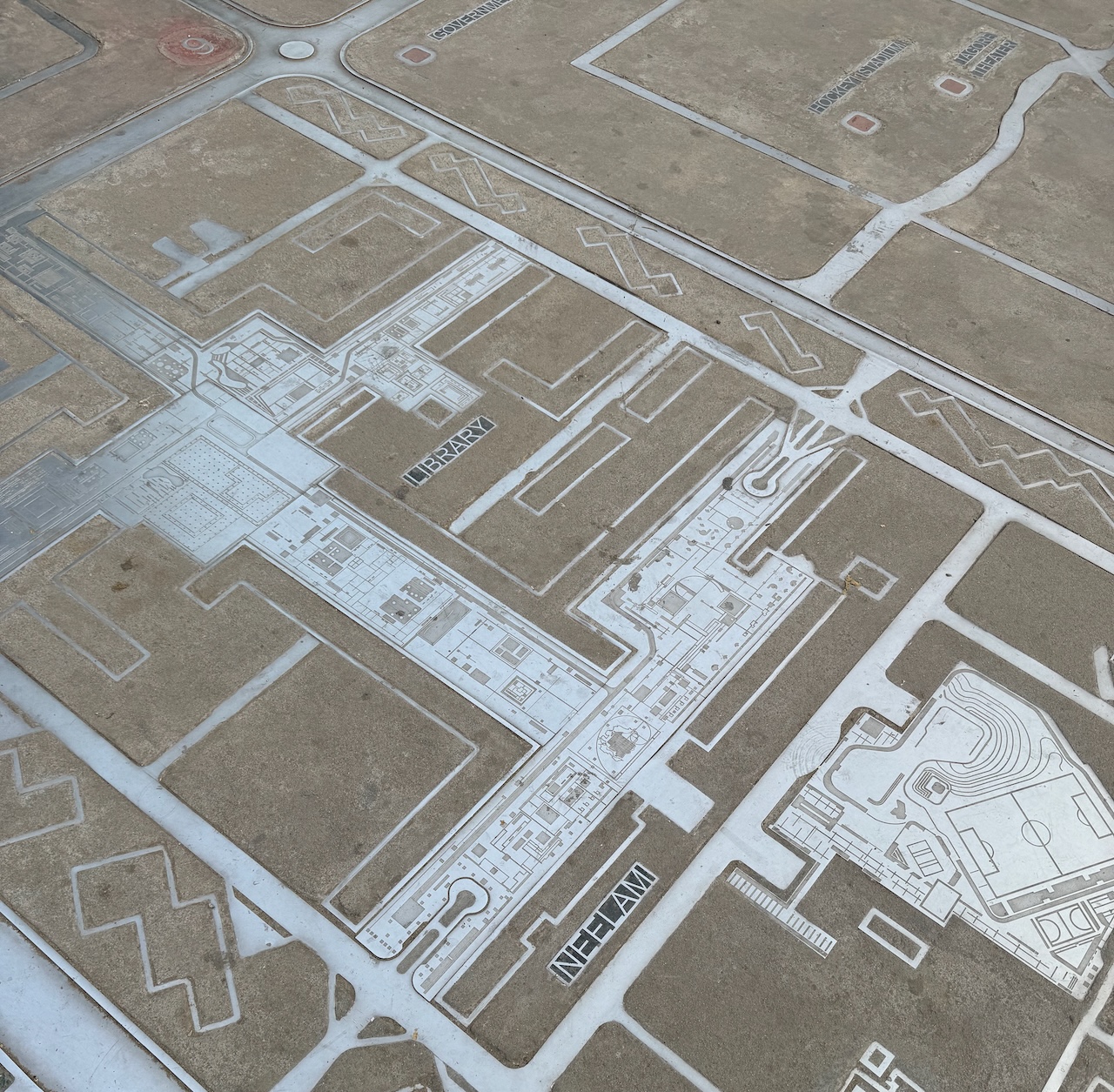
They did smile, I swear. ↩